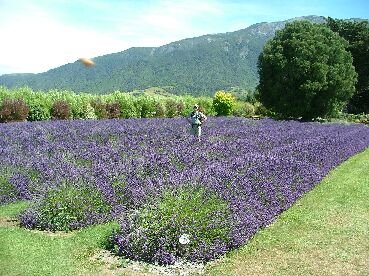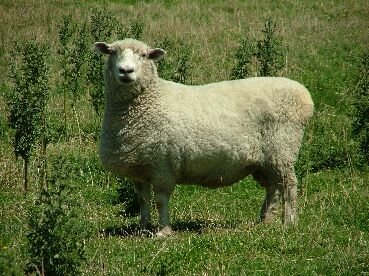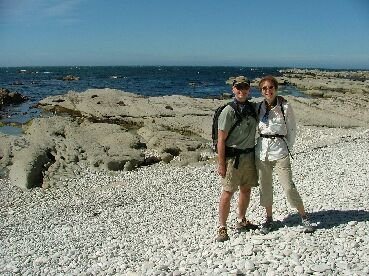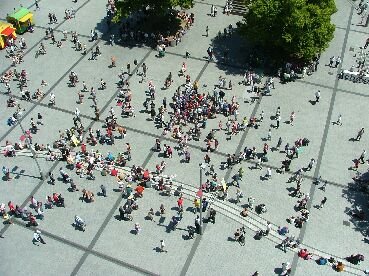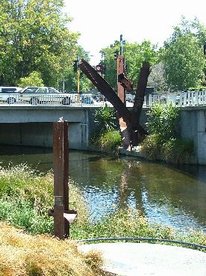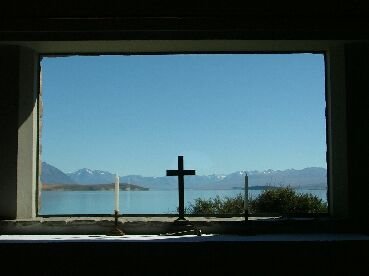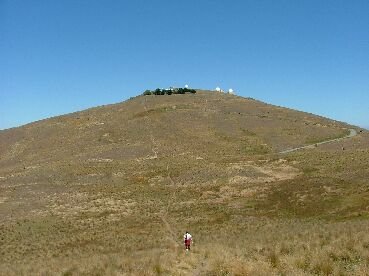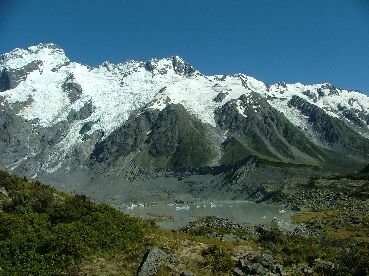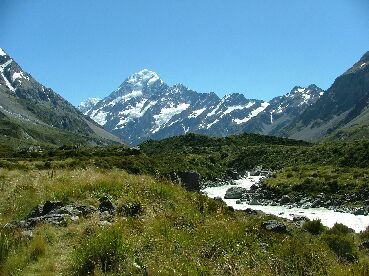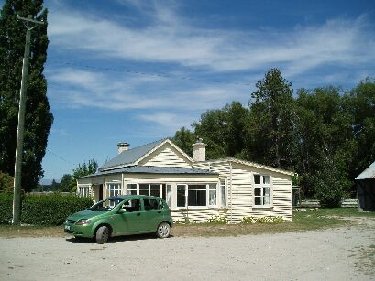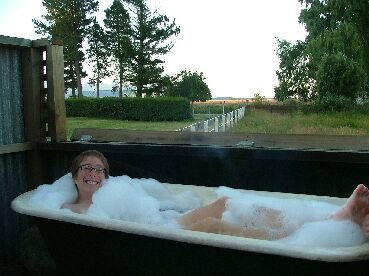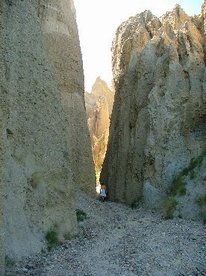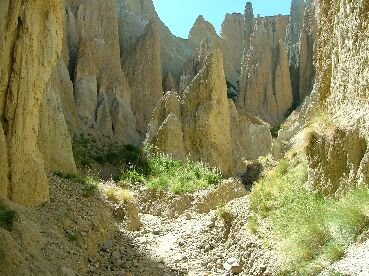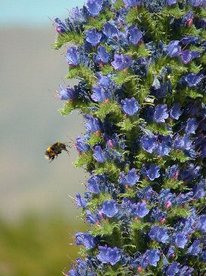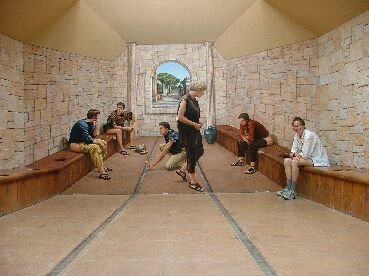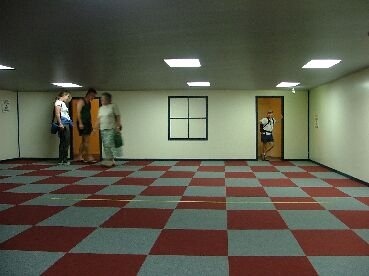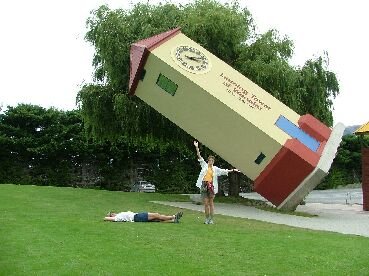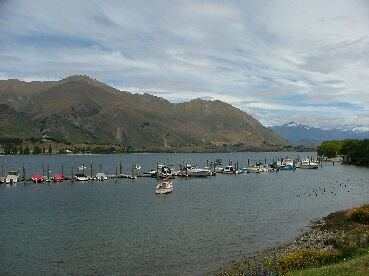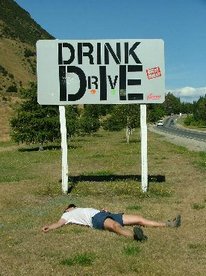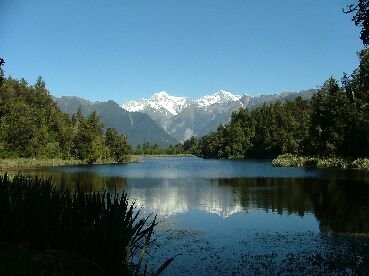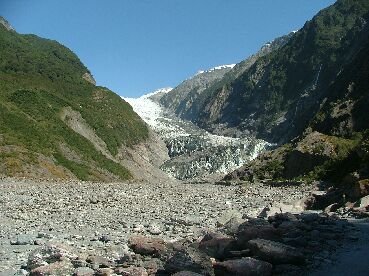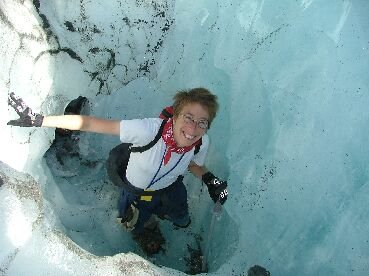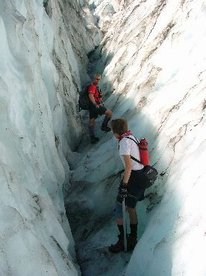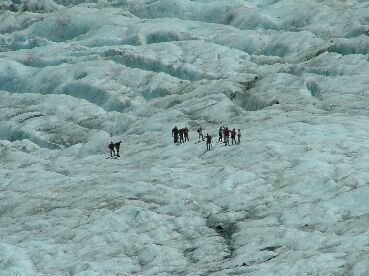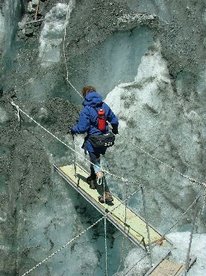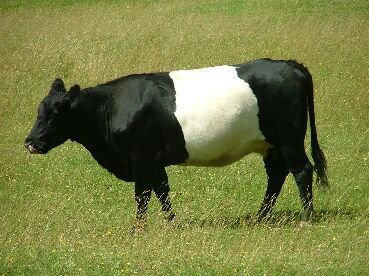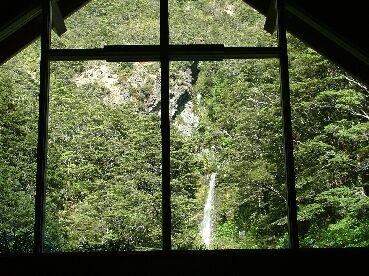|
|
WhereAreJanetandRick New Zealand |
|
South Island
Kaikoura
After one too quick week on the North Island we took the ferry from Wellington to Picton in the South Island. It is here that most of the Lord of the Rings “Middle Earth” was filmed and it really did have the feel of Hobbitland!
We started down the East Coast and had wonderful visits with local flora & fauna in this coastal town. The Lavender Gardens (left) were well manicured and boasted 11 types of lavender, including 2 edible varieties (which we tasted in raspberry jam!) See Rick among the lavender, bees and butterflies. You can see a bee (yellow blur on the left third of the picture between the field and mountains and a butterfly in the middle of the picture about a quarter of the way up. We climbed the hills in the background to see beautiful views of the town, farms, mountains, and coastline.
On our hike we were greeted by our woolly friends including the one staring here. We saw white sheep, black sheep, sheared sheep and all Rick could think about was which one was going to help make his next sweater!
(PS: Rick finally did find the right one: a mix of merino, possum and silk!)
Kaikoura is known as the whale-watching capital of NZ. We took a two hour whale-watching trip. They do not guarantee any sightings but estimate 2 whales per trip. The good news is that we saw a total of 7! (2, 2, 3). The bad news is that the first 4 were sleeping which means that all you see is their backs bobbing in and out of the water with wave swells. The next 3 quickly disappeared for a bite at the bottom and only one showed us his tail on the way down! It was still a thrill to see these large animals and learn about them out in the wild.
On our last day in Kaikoura, we went for a beautiful hike along the coastal peninsula. One way we walked along the beach, then climbed the escarpment and walked back along the top.
We shared the beach with fur seals (Like the cape seals in Namibia, they shriek and stink!) and caught amazing views from the escarpment.
Christchurch
Christchurch is often described as the most British of NZ cities and we couldn’t disagree! The centre of town boasts a magnificent cathedral, tram and beautiful square. It was Busker Festival and we were treated to acrobatics and juggling from a very talented Canuk! We climbed 134 steps up the Cathedral Tower’s narrow windy staircase to view the city from 360 degrees.
On the way back to our backpackers’ we saw this intriguing artwork near the local Fire station. It is actually 2 pieces of steel that were recovered from the Twin Tower destruction of 9/11. It was from the 104th floor and had been shipped to NZ to create a memorial to all the fire-fighters who perished in the tragedy.
Lake Tekapo
Lake Tekapo was our next destination as we headed south and inland. The permanent population has swelled to 315 (our guidebook only quoted 286) and it was a holiday town for many locals. The early pioneers built this church out of local stone and insisted that any rocks or bush on site be incorporated into the structure.
The views outside & inside were breathtaking.
Lake Tekapo’s Mount John was chosen as the site for this observatory by New Zealand, the USA & Japan for a number of reasons: limited rainfall allowing more viewing nights, highest point near a town for power, etc., yet away from city light pollution. We thought the hike up & views were magnificent!
We had a full tour of the facility to learn about the amazing work being done here. We also took a midnight tour to view the sky. We learned how to find celestial south and about numerous southern constellations (Orion was up side down!). We also viewed Saturn and its rings through a large telescope. Despite Rick’s request to 'Show us Uranus!', our guide, Josie, advised that is wasn't in viewing position that night.
Mount Cook
Mt Cook is NZ’s tallest and most challenging mountain (No we didn’t attempt the 5 day icepick climb!). It boats numerous of NZ’s +350 glaciers including the largest Tasman Glacier.
The Hooker Valley trail leads to the terminal (down-mountain) end of the Hooker Glacier. The terminal end ice is black & grey from rock, mud & glacier flour (ground stone) picked up as the glacier descends the mountain. The glacier melt water pools in this muddy lake with ice chunks that fell off of the terminal end glistening in the hot summer temperatures and beaming sun.
We traversed 2 swing bridges & Rick stopped often to photograph the many mountain flowers.
Twizel
Mt. Cook National Park is a protected area along with much of the green spaces (no more building is allowed). We couldn’t find reasonably priced accommodation so we stayed just outside in the nearest town 45km away: Twizel.
This was a stroke of luck as we found this wonderful farm that had B&B’s and a Backpackers lodge. We parked right outside our bedroom window!
Just outside our cabin was the outdoor wood-stoked porcelain claw-foot bathtub! After a long day of hiking in Mt. Cook National Park, we bathed outdoors in lavender bubbles with a fine Australian Shiraz while viewing Mt. Cook in the background as the sun set!
Clay Cliffs
As we ventured further south we stumbled across this privately owned/protected area. There was an “honesty box” filled with money and a sign requesting $5 payment for entry! We willingly obliged and hiked on. As you can see here, they are magnificent and very much like a tiny Bryce canyon in the USA.
It was here that we heard one of Rick’s favourite sayings. We met a man from New York (30ish) who was travelling around the world for a few years and had sailed to NZ. He sadly explained that “I have to be home this year”. Rick is still in awe!
Just in case you thought you would have to wait for another one of Rick’s flora pics - here’s one with a friend!
Lake Wananka - Puzzle World
Lake Wanaka & Lake Hawea are the centrepiece fresh water lakes of the South Island. The town of Lake Wanaka has many children’s activities including amazing parks & this Puzzle World complex. The Toilet area boasts these “Roman Toilets” where Rick caught Janet in action (actually just posing!-the real toilets are inside!).
There are many areas with optical illusions. Here we ask: What happened to Rick?
Here we see that Rick is resting while Janet struggles to keep the clock tower from falling on him!
Lake Wanaka - Roy Peak
Besides fun & games we also climbed the highest peak in Wanaka: just shy of one mile high! It was a well earned lunch that we ate with beautiful panoramic views from the top!
New Zealand is very blunt when it comes to discouraging drinking & driving. Along with signs of caskets and corpses on gurneys, there was direct wording!
Fox Glacier
From Lake Wanaka we proceeded west and up the coast to Glacierland. We stopped at the town of Fox Glacier and hiked away from the glacier to and around Matheson Lake. At left is an almost mirror reflection of Mts Cook and Tasman in Matheson Lake.
Franz Joseph Glacier
The next day, we took a full day's guided tour of the Franz Joseph Glacier. We donned shorts and sunscreen, packed our crampons, and hit the glacier.
Pictured at leftis the Franz Joseph Glacier from about a kilometer out along the melt-water river bed. We walked 2 km along the riverbed just to reach the terminal end of the glacier.
At the foot of the glacier, we fastened our crampons to our boots and started climbing the ice steps that were being cut for us.
At right is Janet emerging from an ice cave - does she look happy or what!?!
Here's Janet again with our guide, Roar.
Pictured here is another group of climbers. Rick used a magnification of 10 to get this picture. It didn't feel like it, but we were guite high up!
Here's Janet crossing an ice bridge - Don't look down!
Arthur's Pass
We left Glacierland on the west coast to cross the Southern Alps to catch our flight to Australia from Christchurch on the east coast the next day. We overnighted in Arthur's Pass, the highest town in NZ. On our way there we spotted these unusual 'Oreo cows'. We were later advised that this breed can also be found in Maine, USA.
On the actual pass, we were treated to this kea. Kea are an endemic parrot of the South Island's high country. Although kea are seen in reasonable numbers throughout the South Island, the size of the wild population is unknown - but is estimated at between 1,000 and 5,000 birds.
To survive in the harsh alpine environment kea have become inquisitive and nomadic social birds - characteristics which help kea to find and utilise new food sources. Their inquisitive natures often cause kea to congregate around novel objects and their strong beaks have enormous manipulative power. Kea are a protected species and rated as one of the most intelligent birds in the world.
The Chapel of the Snows in Arthur's Pass was built in association with local ski clubs. It is one of 3 chapels that we visited in NZ with outstanding views from inside.
This is our last entry from NZ. Stay tuned to tales from Oz, coming soon.
| ||||||||||||||||||||||||||||||||||||||||||||||
